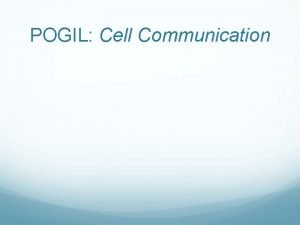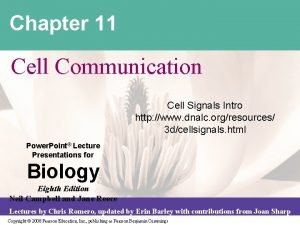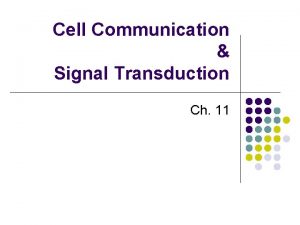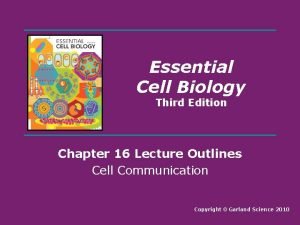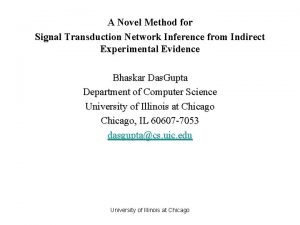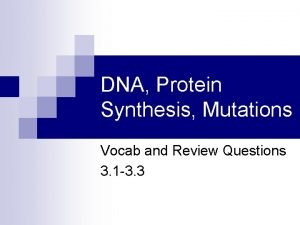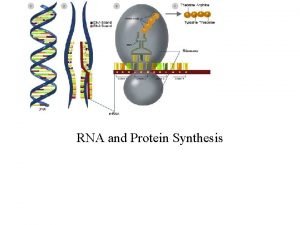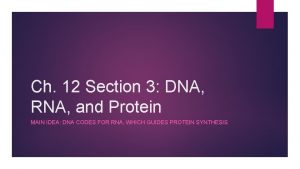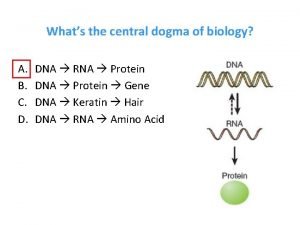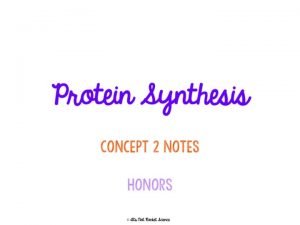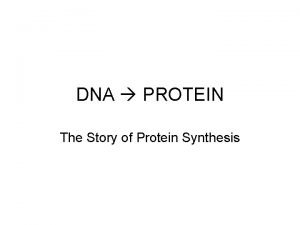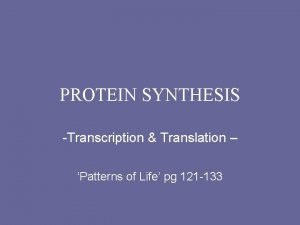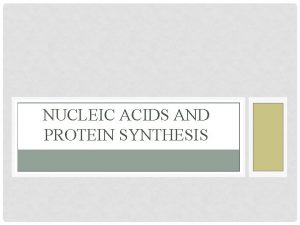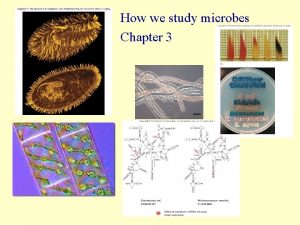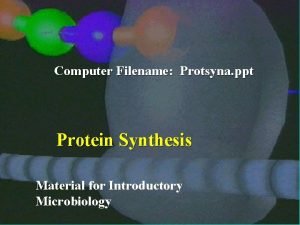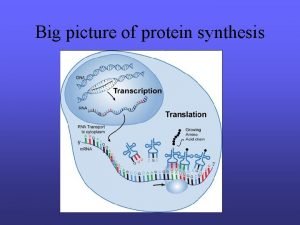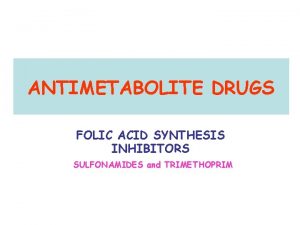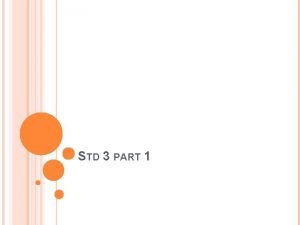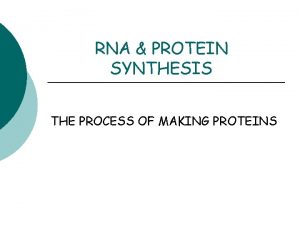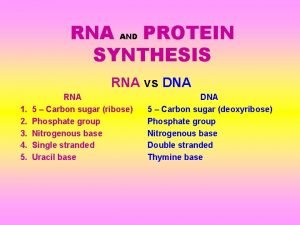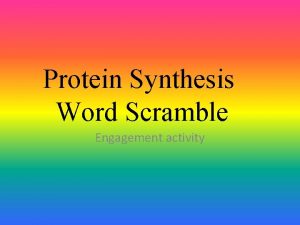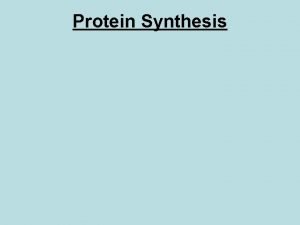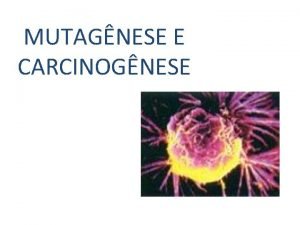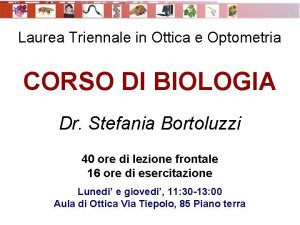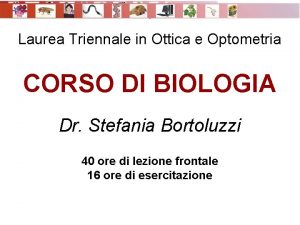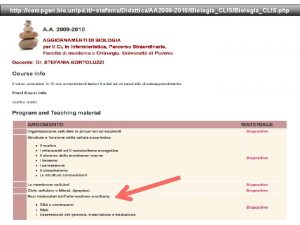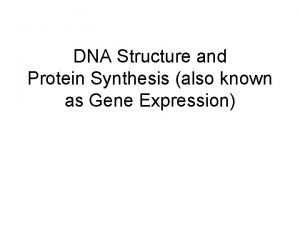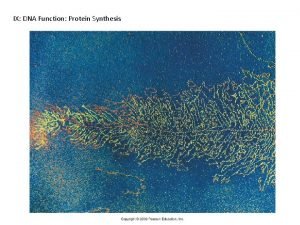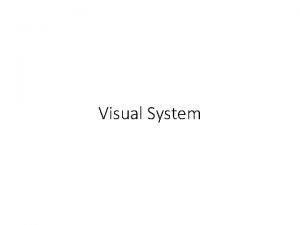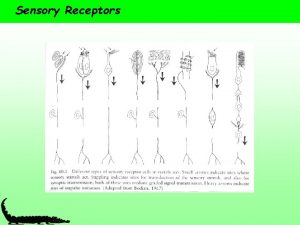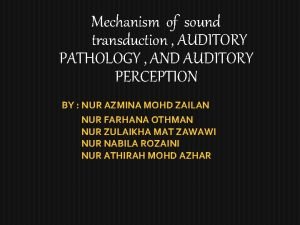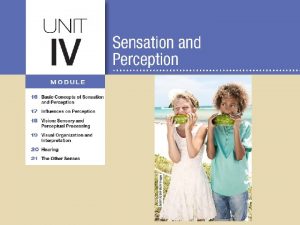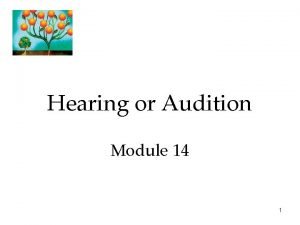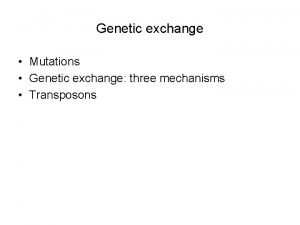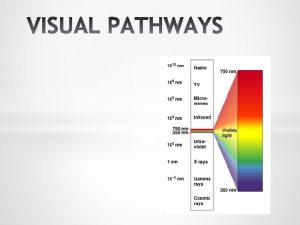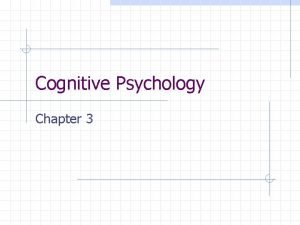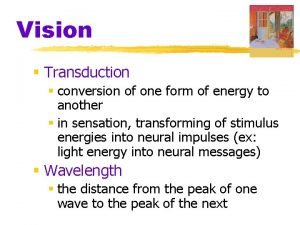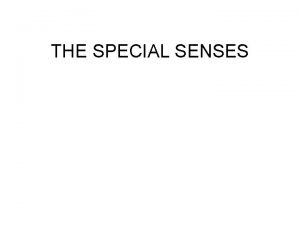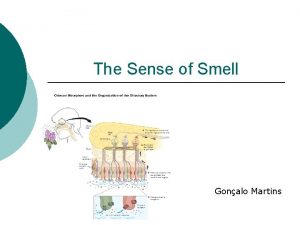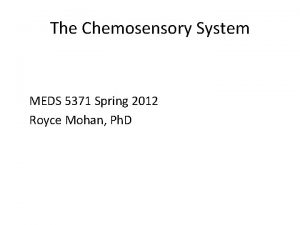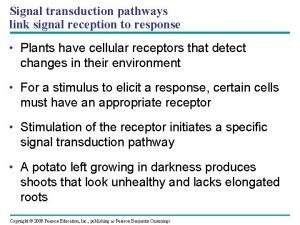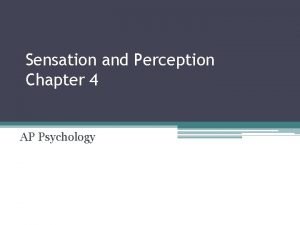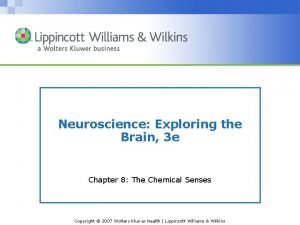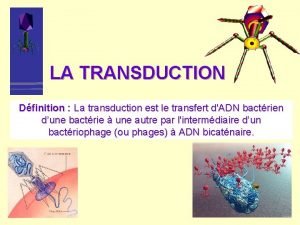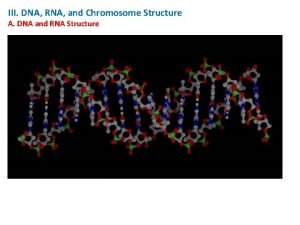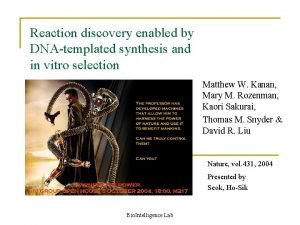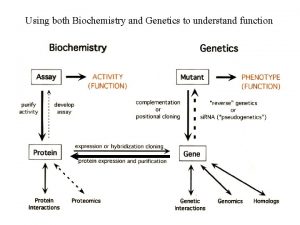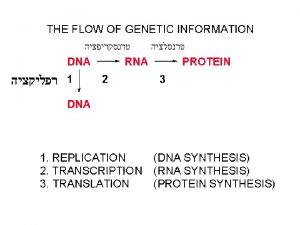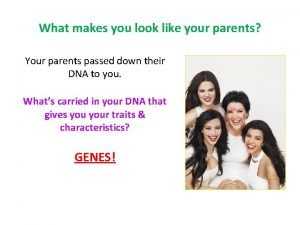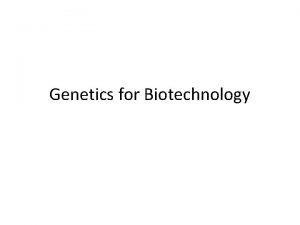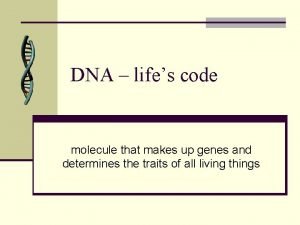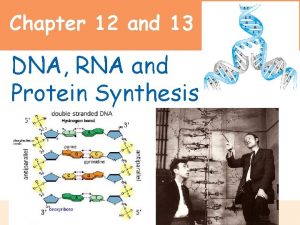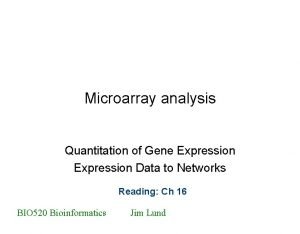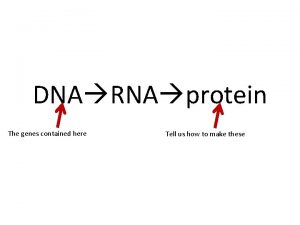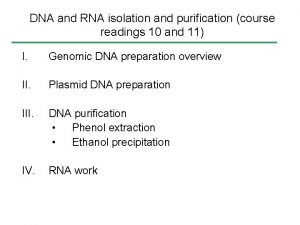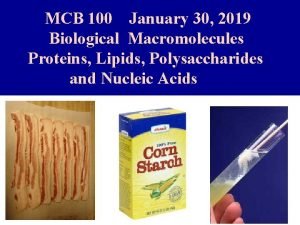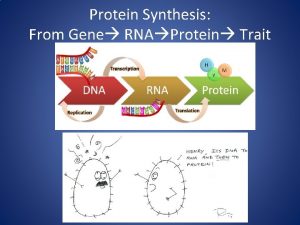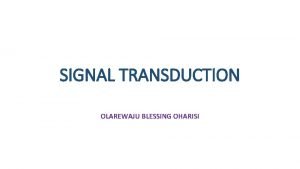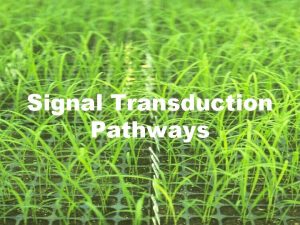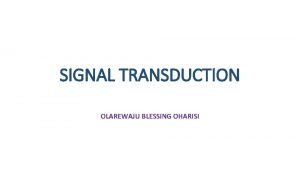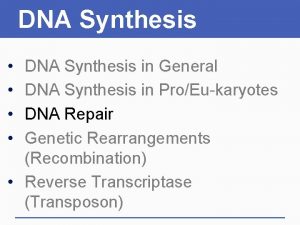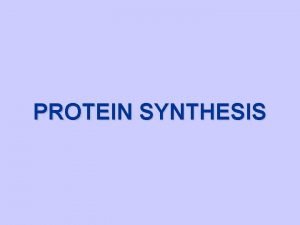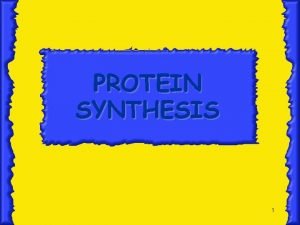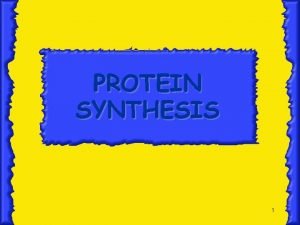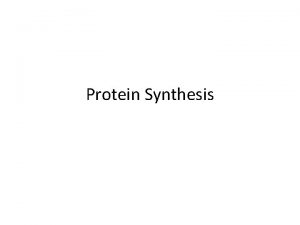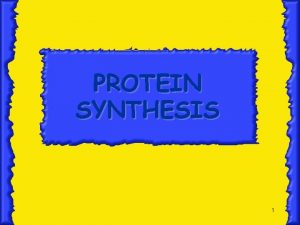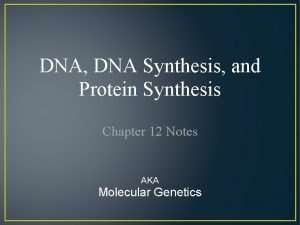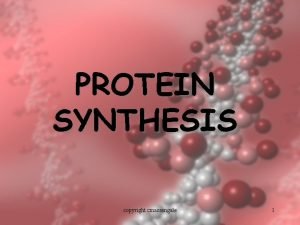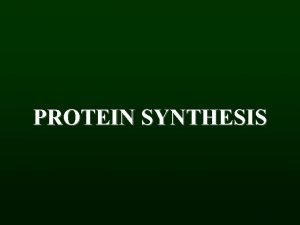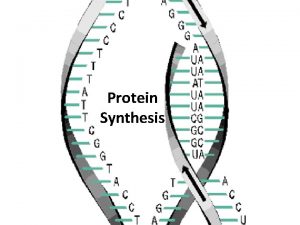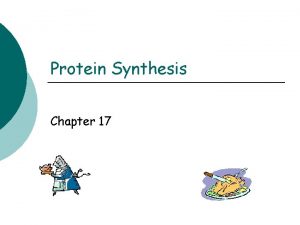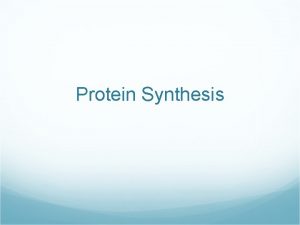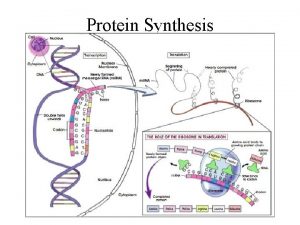PHYSIOLOGY Signal Transduction and Protein Synthesis DNA n



















































































- Slides: 83

PHYSIOLOGY Signal Transduction and Protein Synthesis


DNA n DNA – Deoxyribonucleic Acid – Twisted ladder or double helix – Nucleotides » Composed of alternating sugar (Deoxyribose) and phosphate molecules and » Nitrogen bases Purines = adenine and guanine n Pyrimidines = thymine cytosine n

DNA n Purines bond with Pyrimidines – Complementary base pairs » Adenine with Thymine » Guanine with Cytosine

DNA n Purines bond with Pyrimidines – Complementary base pairs » Adenine with Thymine » Guanine with Cytosine n Nucleoside – Sugar bonding with a base n Nucleotide – Adding a phosphate to a nucleoside n Phosphates attach to the 5’ carbon of the sugar

Orientation of DNA The carbon atoms on the sugar ring are numbered for reference. The 5’ and 3’ hydroxyl groups (highlighted on the left) are used to attach phosphate groups. n The directionality of a DNA strand is due to the orientation of the phosphate-sugar backbone.

DNA is a double helix P T A 5’ DNA has directionality. C G P 3’ P PP P Two nucleotide chains together wind into a helix. G C A P P T P Hydrogen bonds between paired bases hold the two DNA strands together. P C G P P G 3’ C DNA strands are antiparallel. P A sugar and phosphate “backbone” connects nucleotides in a chain. 5’



DNA n A chromosome – 23 pair = diploid – 23 = haploid; sex cells – Duplicating DNA structure tightly packed around histone proteins to form a nucleosome.



DNA n A gene – A series of bases that occupy a specific location (locus) on a chromosome – The code of a single protein or polypeptide n Genetic Alphabet – Triplet = Three nucleotides on DNA with their corresponding base pairs making up the code of a single amino acid – Codon = Three successive nucleotides on RNA with their corresponding base pairs making up the code of a single amino acid – 20 amino acids – A series of amino acids makes up a protein

DNA n Consists of 3 billion base pairs – Codes for about 50 to 100, 000 genes – Genes may exist in alternate forms = alleles » One allele from mom and one allele from dad – Nucleotide changes or mutations may occur in a gene » Sickle cell anemia – In a healthy population, a gene may exist in multiple alleles – Genetic Polymorphism = Multiple different forms at a gene locus in a population » Basis for DNA typing using MHC

Terminology – Allele » An alternate form of a gene – Locus » Location of a gene on a chromosome – Gene » Genetic code or “blueprint” for the cell to build one particular protein


Two types of nucleic acids n. RNA n. Usually single-stranded n. Has uracil as a base n. Ribose as the sugar n. Carries protein-encoding information n. Can be catalytic n. DNA n. Usually double-stranded n. Has thymine as a base n. Deoxyribose as the sugar n. Carries RNA-encoding information n. Not catalytic


Protein Synthesis Proteins are necessary for cell functions Protein synthesis is under nuclear direction DNA specifies Proteins DNA ? m. RNA ? Protein

Redundancy of Genetic Code (p 115) A combination of three bases forms a codon 1 start codon 3 stop codon 60 other codons for 19 aa

RNA n Definitions – Exon » Amino acid specifying informational sequences in the genes of higher organisms – Intron » Noncoding segments or portions of DNA that ranges from 60 to 100, 000 nucleotides long

Transcription DNA is transcribed into complementary m. RNA by RNA Polymerase + nucleotides + Mg 2+ + ATP Gene = elementary unit of inheritance Compare to Fig. 4 -33

Transcription First steps in protein synthesis that occurs completely within the nucleus n DNA is used as a template to create a small single strand of m. RNA that can leave through the nuclear pore. n The enzyme RNA polymerase plus magnesium or manganese ions along with ATP are needed in this process. n

Transcription DNA is used as a template for creation of RNA using the enzyme RNA polymerase. DNA 5’ G T C A T T C G G 3’ 3’ C A G T A A G C C 5’

Transcription The new RNA molecule is formed by incorporating nucleotides that are complementary to the template strand. DNA coding strand 5’ 3’ DNA G T C A T T C G G 3’ G U C A U U C G G 3’ C A G T A A G C C 5’ DNA template strand 5’ RNA

Transcription n Promoter – Sequence on DNA where the RNA polymerase attaches to begin transcription – A region at the beginning of a gene that must be activated before transcription can begin. – This region is not transcribed into m. RNA

Transcription n Transcription Factors – Binds to DNA and activates the promoter » Tells the RNA polymerase where to bind to the DNA » RNA polymerase moves along the DNA molecule and “unwinds” the double strand by breaking hydrogen bonds between base pairs – Sense strand » Guides RNA polymerase in RNA synthesis – Antisense strand » Sits idly by and is not transcribed

Transcription n Each base of the DNA sense strand pairs with a complementary m. RNA base – AGTAC on DNA – UCAUG on m. RNA Uracil is substituted for Thymine n Ribose sugar is used as the backbone of m. RNA instead of Deoxyribose sugar n

Initiation of transcription Transcription begins at the 5’ end of the gene in a region called the promoter. The promoter recruits TATA protein, a DNA binding protein, which in turn recruits other proteins. TATA binding protein Promoter DNA GG Transcription factor Gene sequence to be transcribed TATA CCC TATA box Transcription begins


m. RNA processing n Alternative splicing occurs – Enzymes clip segments out of the middle or off the ends of m. RNA strands » Introns – m. RNA segments are spliced back together by the spliceozyme enzyme » Exons n The processes m. RNA leaves through the nuclear pore and attaches to a ribosome


m. RNA Contains the coded information for the amino acid sequence of a protein n 3 main parts: n – 5' leader sequence - important for the start of protein synthesis. – Coding Sequence - the sequence that codes for the amino acid. – 3’ trailer sequence - poly A tail.

Messenger RNA undergoes three (or four) post-transcriptional modifications 1. Capping of 5’ end 2. Additional of poly A tail to 3’ end 3. Removal of introns 4. Editing of RNA (rarely) EUKARYOTES ONLY!!!!!!!!

5’ capping. Involves the addition of a guanine (usually 7 -methylguanosine) to the terminal 5’ nucleotide. n The enzyme that completes this process is called a capping enzyme. n The 5’ cap is required for the ribosome to bind to the m. RNA as the initial step of translation.

Addition of a 3’poly A tail. n n n This poly(A) tail is usually about 50 - 250 bps of adenine in length. There is no DNA template for this tail? Poly A tails are found on most m. RNA molecules but not all (ex. histones m. RNA have no poly A tail). In general, a eukaryotic m. RNA molecule is longer than the required transcript. The enzyme RNA endonuclease cleaves the molecule at the poly(A) addition site to generate a 3’ OH end. The poly A tail is important for determining the stability of the m. RNA molecule so the m. RNA doesn’t degrade.


Translation n Translation begins when m. RNA binds to a ribosome in the cytoplasm of the cell.

Translation m. RNA is translated into string of aa (= polypeptide) 2 important components ? ? m. RNA + ribosomes + t. RNA meet in cytoplasm Anticodon pairs with m. RNA codon aa determined Amino acids are linked via peptide bond.

The Genetic Code n The code has start and stop signals. AUG (methionine) is the common start codon Methionine can also be used WITHIN a polypeptide GUG may also be used as a start codon. n There are three stop codons. UAG UAA UGA All three are chain termination codons.


Ribosomal RNA Large and small subunits n Binding sites n – One for m. RNA – Three for t. RNA » P site = Peptidyl-t. RNA site » A site = Aminoacyl-t. RNA site » E site = Exit site


Transfer RNA n The correct amino acid is added to the growing polypeptide only if: – 1 - The appropriate amino acid is added to the t. RNA by aminoacyl-t. RNA synthetases. – 2 – Complementary binding occurs between the codon of the m. RNA and the anticodon of the t. RNA.

Translation (An Overview) n n n Translation is defined as protein synthesis. Occurs on ribosomes, where the genetic information is translated from the m. RNA to a protein. m. RNA is translated in the 5’ to 3’ direction. Amino acids are brought to the ribosome bound to a specific t. RNA molecule. The m. RNA and t. RNA are responsible for the correct recognition of each amino acid in the growing polypeptide

Initiation n A small ribosomal subunit binds to both m. RNA at the 5’ cap along with a specific initiator t. RNA – The initiator t. RNA carries methionine t. RNA’s anticodon binds with the codon on m. RNA n The large ribosomal subunit attaches to form the translation initiation complex. n The initiation complex is held together by proteins called initiation factors n

Initiation The t. RNA sits in the P site of the ribosome n The A site is vacant n The methionine is at the N-terminus of the growing protein n The carboxyl end is called the C-terminus n All proteins grow from the N to the C-terminus n

Elongation n Binding of the aminoacyl-t. RNA to the ribosome n formation of a peptide bond n The movement (translocation) of the ribosome along the m. RNA, one codon at a time.

Elongation n Three step cycle – The ribosome will move 5’ to 3’ on the m. RNA n Step one – The anticodon of an incoming aminoacylt. RNA base-pairs with the complementary m. RNA codon in the A site – GTP hydrolysis occurs

Elongation n Step two – The large ribosomal subunit catalyzes the formation of a peptide bond – Hydrogen bonds break between the t-RNA in the P site and between the codon and anti-codon n Step three – translocation – The ribosomes moves along the m. RNA one codon – The t. RNA that was in the A site is now in the P site – The t. RNA in the P site exits through a tunnel in the r. RNA called the E site – The next t. RNA enters in the empty A site

Termination is usually signaled by one of the three stop codons UAG, UAA or UGA. n There a number of “helper” proteins involved (e. g. termination factors and release factors). n GTP is necessary to break the complex apart n

Translation initiation Leader sequence Small ribosomal subunit 5’ 3’ m. RNA U U C G U C A U G G G A U G U A A G C G A A U A C Assembling to begin translation Initiator t. RNA Met

Translation Elongation Ribosome 5’ 3’ m. RNA A U G G G A U G U A A G C G A U A C C C U t. RNA P Amino acid A Met Gly Large ribosomal subunit

Translation Elongation 5’ 3’ m. RNA A U G G G A U G U A A G C G A U A C C C U A A C A P Met Gly Cys

Translation Elongation 5’ 3’ m. RNA A U G G G A U G U A A G C G A C C U A C A U A C P Gly t e M Cys A

Translation Elongation 5’ 3’ m. RNA A U G G G A U G U A A G C G A P C C U A C A U U A C Gly t e M Cys Lys U A C

Translation Elongation m. RNA 5’ 3’ A U G G G A U G U A A G C G A P C C U A C A U U C Gly Lengthening polypeptide (amino acid chain) t Me Cys Lys A

Translation Elongation 5’ 3’ m. RNA A U G G G A U G U A A G C G A U A C A U U C P C C G C U Cys Gly t Me A Lys Arg

Translation Elongation 5’ 3’ m. RNA A U G G G A U G U A A G C G A U A C A U U C P C C G C U Cys Gly t Me A Lys Arg

Translation Elongation Stop codon 5’ m. RNA A U G G G A U G U A A G C G A U A A A P C Gly M et U U C G C U A Cys Lys A Arg Release factor

Translation Termination Stop codon Ribosome reaches stop codon 5’ m. RNA A U G G G A U G U A A G C G A U A A G C U U P Met Gly U C Cys Release factor Lys Arg A

Translation Termination Once stop codon is reached, elements disassemble. A U GG GA UG U AA G C G A U A A G C P U Release factor s s Cy Met Gly Arg Ly A




Translation Modifications Protein folding n Glycosylation n – Addition of glycogen to the protein by the Golgi Apparatus – Create a glycoprotein n Vesiculation – Protein is surrounded by a vesicle n Exocytosis will then occur

Post – Translational protein modifications: Folding, cleavage, additions glyco- , lipo- proteins Protein Sorting n No signal sequence protein stays in cell n Signal sequence protein destined for translocation into organelles or for export

For “export proteins”: Signal sequence leads growing polypeptide chain across ER membrane into ER lumen Modifications in ER Transition vesicles to Golgi apparatus for further modifications Transport vesicles to cell membrane



Signal Transduction 1 st The signal molecule is a ligand that binds to a receptor. The ligand is also known as the first messenger because it brings information to its target cell 2 nd Ligand-receptor binding activates the receptor 3 rd The receptor in turn activates one or more intracellular signal molecules 4 th the last signal molecule in the pathway initiates synthesis of target proteins or modifies existing target proteins to create a response

Receptor Proteins n Lipophilic signal molecules – Can diffuse through the phospholipid bilayer and bind to cytosolic receptors or nuclear receptors – Steroids are lipophilic n Lipophobic signal molecules – Unable to diffuse through the phospholipid bilayer of the cell – Bind to receptor proteins on the cell membrane


Receptor-Enzymes n n Transmembrane receptor binds with a ligand on the extracellular surface of the cell Intracellularly an enzyme is bound to the receptor protein – The enzyme is typically a protein kinase (ie. tyrosin kinase) or guanylyl cyclase – Guanylyl cyclase converts GTP to cyclic GMP (c. GMP) – Adenylyl cyclase converts ATP to cyclic AMP (c. AMP)

Signal Transduction n The process by which an extracellular signal molecule activates a membrane receptor that in turn alters intracellular molecules to create a response

Signal Amplification n Turns on signal molecules into multiple second messenger molecules

Steps of Signal Transduction An extracellular signal molecule binds to and activates a protein or glycoprotein membrane receptor n The activated membrane receptor turns on its associated proteins n – The proteins may activate protein kinases – The proteins may create an intracellular second messenger

Second Messenger n Second messenger molecules – Alter the ion channels by opening or closing them – Increase intracellular calcium in order for the calcium to bind to proteins and change their function – Change enzyme activity

n Signal molecule binds to the G-protein linked receptors – The protein changes confirmation and activates the intracellular G protein n n The G protein moves horizontally in the membrane to bind with adenylyl cyclase, an amplifier enzyme Adenylyl cyclase converts ATP to cyclic AMP c. AMP activates protein kinase A Protein kinase A phosphorylates other proteins – There is a cellular response » Such as a protein binding to the promoter site on DNA to start transcription » Release of calcium to change enzyme activity


Specificity v Competition n Receptors have binding sites for ligands – Different molecules may be able to bind to the same receptor » Ie. Epinephrine and its cousin Norepinephrine n These both bind to a class of receptors called Adrenergic receptors – Alpha and Beta receptors » Alpha has a higher affinity for norepinephrine » B 2 receptors have a higher affinity for epinephrine

Agonists v Antagonists n When a ligand combines with a receptor – Either the ligand turns the receptor on and elicits a response or – The ligand occupies the binding site and prevents a response from happening Agonist – turns receptors “on” n Antagonist – turns receptors “off” n

 Chapter 11 dna and genes
Chapter 11 dna and genes Rna and protein synthesis study guide
Rna and protein synthesis study guide Cellular communication pogil
Cellular communication pogil 3 stages of signal transduction pathway
3 stages of signal transduction pathway Cell signal transduction
Cell signal transduction Signal transduction
Signal transduction Signal transduction
Signal transduction Signal transduction
Signal transduction Section 12 3 rna and protein synthesis
Section 12 3 rna and protein synthesis Protein synthesis and mutations
Protein synthesis and mutations Protein synthesis and mutations
Protein synthesis and mutations Protein synthesis and mutations
Protein synthesis and mutations Section 12 3 rna and protein synthesis
Section 12 3 rna and protein synthesis Chapter 12 section 3 dna rna and protein
Chapter 12 section 3 dna rna and protein Totipotent cell
Totipotent cell Protein synthesis
Protein synthesis Dna replication
Dna replication Translation or transcription
Translation or transcription Transcription and translation bbc bitesize
Transcription and translation bbc bitesize Cookie monster analogy
Cookie monster analogy Whats the central dogma of biology
Whats the central dogma of biology Protein synthesis
Protein synthesis Protein synthesis
Protein synthesis Protein synthesis
Protein synthesis Synthesis
Synthesis Protein synthesis animation mcgraw hill
Protein synthesis animation mcgraw hill Molecular genetics and biotechnology
Molecular genetics and biotechnology Translate
Translate Protein synthesis
Protein synthesis Protein synthesis
Protein synthesis Protein synthesis ppt
Protein synthesis ppt Picture of protein synthesis
Picture of protein synthesis Protein synthesis inhibitor
Protein synthesis inhibitor Which best summarizes the process of protein synthesis?
Which best summarizes the process of protein synthesis? Concept map of protein synthesis
Concept map of protein synthesis Protein synthesis
Protein synthesis Protein synthesis scramble
Protein synthesis scramble Fictional character μετάφραση
Fictional character μετάφραση Nucleic acids are made up of
Nucleic acids are made up of Protein synthesis
Protein synthesis Protein synthesis
Protein synthesis Protein synthesis
Protein synthesis Protein synthesis
Protein synthesis Protein synthesis
Protein synthesis Protein synthesis
Protein synthesis Venn diagram dna and rna
Venn diagram dna and rna Carrier vs channel proteins
Carrier vs channel proteins Protein-protein docking
Protein-protein docking Baseband signal and bandpass signal
Baseband signal and bandpass signal Baseband signal and bandpass signal
Baseband signal and bandpass signal Classification of signal
Classification of signal Sensory transduction
Sensory transduction Baroreceptors chemoreceptors mechanoreceptors
Baroreceptors chemoreceptors mechanoreceptors Transduction in the ear
Transduction in the ear Where does transduction occur in the ear
Where does transduction occur in the ear Transduction in the ear
Transduction in the ear Generalized transduction
Generalized transduction Cajal bodies
Cajal bodies Transduction psychology
Transduction psychology Transduction psychology
Transduction psychology Olfactory transduction
Olfactory transduction Olfactory transduction
Olfactory transduction Olfactory transduction
Olfactory transduction What are phytochromes
What are phytochromes Do subliminals really work
Do subliminals really work Olfactory transduction
Olfactory transduction Transductant
Transductant Coding dna and non coding dna
Coding dna and non coding dna Bioflix activity dna replication lagging strand synthesis
Bioflix activity dna replication lagging strand synthesis Chromosome structure
Chromosome structure Dna-templated synthesis
Dna-templated synthesis Dna synthesis at replication fork
Dna synthesis at replication fork Telomerase
Telomerase Dna rna protein central dogma
Dna rna protein central dogma Dna rna protein central dogma
Dna rna protein central dogma What is the goal of replication
What is the goal of replication Dna to protein steps
Dna to protein steps Microarray analysis
Microarray analysis Dna rna protein
Dna rna protein Dna rna protein diagram
Dna rna protein diagram Dna-protein interactions
Dna-protein interactions Dna rna protein trait
Dna rna protein trait Digital signal as a composite analog signal
Digital signal as a composite analog signal Replication
Replication


